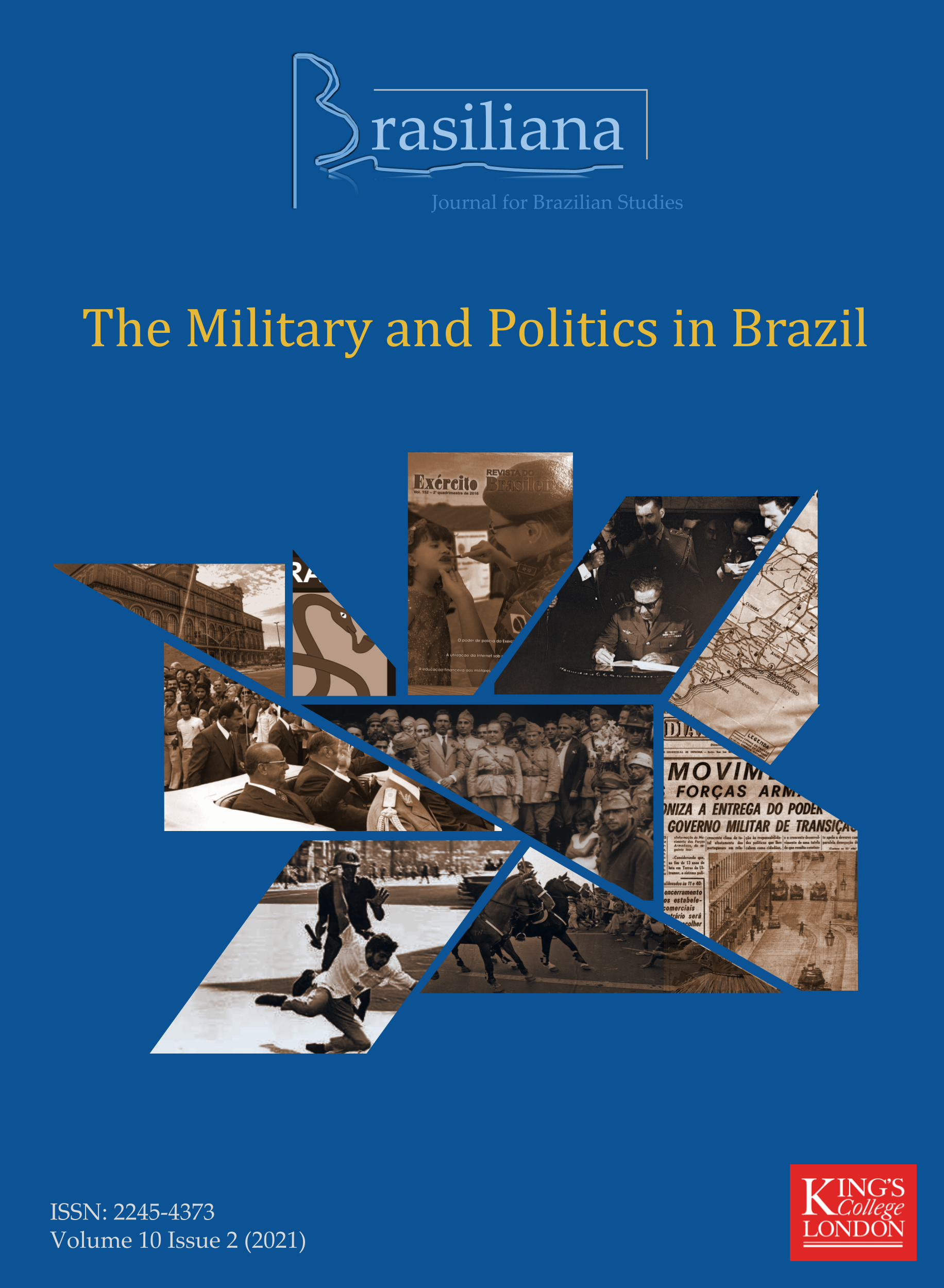O feminino no discurso policial militar: da “ordem unida” ao “espírito de corpo”
Main Article Content
Abstract
The materialist Discourse Analysis (AD) was pioneered by Michel Pêcheux, epistemologically constituting a non-subjective theory of subjectivity where the subject is not the owner of his/her speech, but is affected by ideology, history and unconscious. Its object, discourse, is defined as the effect of meaning between points A and B, which are the representations of subjects in the discourse based on the conjunction between language and history. Knowing that the body, in the field of AD, is considered a discursive materiality, we consider that it is the object of ideological inscription and of values and attributes that contribute to the construction of the identity processes of the subjects, constituting them in a socio-social position or form. historic. In this sense, we seek to reflect in this article on the ways in which the female body was represented and constructed discursively in the military police discourse. For this purpose, the chosen corpus was an article published in the Jornal A Tarde, in the 1990s, which portrayed the beginning of the training of the first women to join the ranks of the Military Police of Bahia (PMBA). We seek, therefore, to think about the ways in which the female body was discursive based on norms, rules and military police aesthetics, highlighting, through discursive memory, the role of historicity and the concept of subjecting the subject, crossed by language and history and questioned by ideology, thus using the analytical categories of AD as a theoretical and methodological support.
Article Details
![]()
Articles published in Brasiliana are licensed under a Creative Commons Attribution-NonCommercial-NoDerivs 3.0 Unported License.
When publishing open access, the author signs an author publishing agreement in which they retain copyright and give Brasiliana the right to publish the article. Our Open Access publications are distributed under the terms of the Creative Commons Attribution 4.0 International License, which permits unrestricted use, distribution, and reproduction in any medium, provided the original work is properly cited.
References
ALVAREZ, P.H. 2020. Mulheres em Revista: a discursivização da mulher na revista jornal das moças da década de 1950. São Carlos: Pedro & João Editores.
ALTHUSSER, L. 1975. Ideologia e aparelhos ideológicos do Estado. São Paulo: Editorial Presença/Martins Fontes.
BAHIA. 1989. Decreto Estadual n.º 2.905, de 19 de outubro de 1989. Dispõe sobre a criação da Companhia de Polícia Feminina no Estado da Bahia.
BRASIL. EXERCITO BRASILEIRO. 2000.[https://www.anpocs.com/index.php/papers-39-encontro/gt/gt33/9756-o-batom-como-arma-identidade-e-usos-da-imagem-feminina-na-policia-militar-de-sao-paulo/file]. Manual de Campanha – Ordem Unida. [Consulta: 08 de abril de 2021]
BEAUVOIR, S. 2009. O segundo sexo. Tradução Sérgio Milliet. Rio de Janeiro: Nova Fronteira.
CASTRO, C. 2004. O espírito militar: um antropólogo na caserna. 2. ed. Rio de Janeiro: Jorge Zahar.
FERREIRA, M. C. L. 2013. [https://core.ac.uk/download/pdf/236654571.pdf. ] O corpo como materialidade discursiva. REDISCO n. 1: 77-82. [Consulta: 09 de abril de 2021].
FOUCAULT, M. 1987.Vigiar e punir: nascimento da prisão. Rio de Janeiro: Vozes.
JORNAL A TARDE. 1990. Mulher começa bem o treinamento da PM.
MOREIRA, R. 2016. Entre o mito e a modernidade: a entrada de mulheres na Polícia Militar do Paraná. Guarapuava: Editora Unicentro.
MOREIRA, R. 2017. Sobre mulheres e polícias: Polícia feminina no Brasil – a invenção paulista (1955-1964). Guarapuava: Editora Unicentro.
ORLANDI, E. P. 2017. Discurso em análise: sujeito, sentido, ideologia. Campinas: Pontes Editores.
PÊCHEUX, M. 2014. Semântica e discurso: uma crítica a afirmação do óbvio. Campinas: Editora da UNICAMP.
PÊCHEUX, M. 1990. Discurso: estrutura ou acontecimento. Campinas: Pontes.
PÊCHEUX, M. 2002. Por uma análise automática do discurso: uma introdução à obra de Michel Pêcheux. Campinas: UNICAMP.
PERROT, M. 2007. Minha história de das mulheres. São Paulo: Contexto.
SCAHCTAE, A. M. 2016. [http://www.seer.uece.br/?journal=opublicoeoprivado&page=article&op=view&path%5B%5D=2136]. A arma e a saia: definindo a atividade policial feminina e reconstituindo diferenças de gênero. O público e o privado 28: 91-109. [Consulta: 10 de abril de 2021].
SOUZA, Marcos Santana. 2015. [https://www.anpocs.com/index.php/papers-39-encontro/gt/gt33/9756-o-batom-como-arma-identidade-e-usos-da-imagem-feminina-na-policia-militar-de-sao-paulo/file]. O batom como “arma”: identidade e usos da imagem feminina na Polícia Militar de São Paulo. [Consulta: 9 de abril de 2021].

